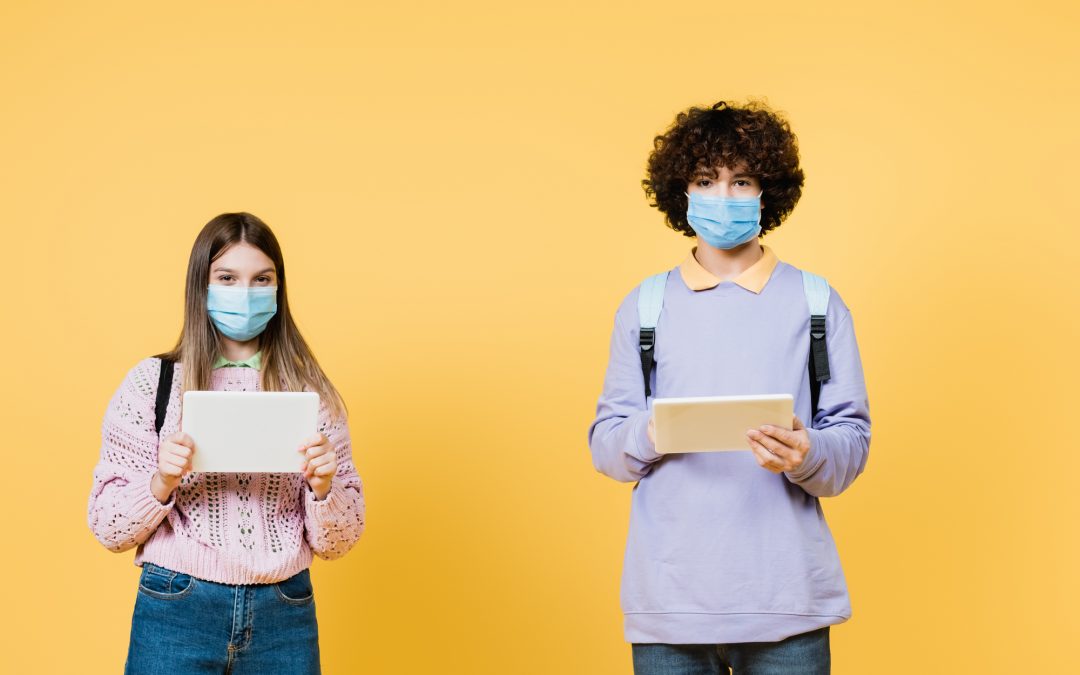The pandemic has taught us many things. One of those lessons is the importance of socialization and how isolation impacts our mental health. COVID-19 has rocked our world and negatively impacted mental health for many. One of the hardest-hit groups is school-aged children and youth mental health support is more important now than ever before. School systems across the country have been struggling to manage the mental health challenges in their schools. But there is still hope. There is always hope.
The U.S. Centers for Disease Control and Prevention, (CDC), reported that from April through October 2020, children ages 5 to 11 who visited an emergency department because of a mental health crisis rose 24% compared to that same time period in 2019. The number is even higher among 12 to 17-year-olds.
Even before the onset of this pandemic, mental health professionals were struggling to meet the needs of children with mental health challenges or learning disorders. Before the Coronavirus, 1 in 5 children struggled with a mental health or learning disorder. Now, surveys show approximately 30-40% of young people are feeling anxious, depressed, and/or stressed. One survey by the Child Mind Institute found that 55% of children felt more sad, depressed, or unhappy during the pandemic (versus just 25% of adults).
In times of crisis in the home, children can turn to support from the school. Schools can provide structure, food, teachers who know the signs of learning or mental health problems, and so much more.
The children being hit the hardest are children in households with unmet needs, BIPOC kids, LGBTQ+ kids, and kids in unstable households. Children suffering from mental health conditions, learning disorders, and autism are also at risk.
The EdWeek Research Center asked both educators and students in grades 9 through 12 to talk about the mental health challenges they’ve faced during the pandemic. Results showed 77% of Black and Latinx students reported struggles at least 9 percentage points higher than the percentage of white or Asian students who said the same. Low-income and LGBTQ students also reported experiencing more problems since the pandemic began. Further research from the Morgan Stanley Alliance for Children’s Mental Health found that, “students of color and/or those with fewer economic resources are likely to have experienced greater learning deficits.” Putting all of this together and it’s clear that our most at-risk children are suffering both mental and learning deficits.
Mental Health Support for Schools
The problems are significant, but so is the effort to help schools deal with these mental health challenges. Congress has approved essentially three big buckets of money for K-12 schools to help cover their pandemic costs: $13 billion from the CARES Act of March 2020, $54 billion from a December follow-up relief package, and a whopping $122 billion from the American Rescue Plan, passed in March. That’s a total of $190 billion for the education department (more than four times the normal annual amount they receive).
With federal coronavirus relief funds available, schools throughout the U.S. are utilizing the money to rapidly extend their ability to address students’ struggles with mental health. Plans include hiring new mental health specialists, such as social workers, counselors, and child psychologists. Mental health investments have gone into staff training, wellness screenings, organizations that can help with assessments and treatments (such as Telement), and curriculum dedicated to social-emotional learning.
The Youth Mental Health Crisis – A National Emergency
Rick Surrency, superintendent of Putnam County, Fla., schools explains, “Teenagers are social beings.” The isolation of remote learning affected many students’ mental well-being even more than it affected their academics.
While school districts have broad leeway on how the aid money should be spent, the urgency of the problem has caused many schools to start acting quickly. Children in schools are experiencing more panic attacks and feeling overwhelmed during class. Many schools are seeing kids playing hooky, experiencing more behavioral issues, and many kids haven’t been in a school setting in almost two years.
For some school systems, the money has boosted long-standing work to help students cope with trauma. Others have launched new efforts to screen, support, and treat students. But, the need for hiring has outstripped the number of available professionals in many school districts.
Last month, three major pediatric groups said the state of children’s mental health should be deemed a national emergency. The U.S. Education Department has pointed to the distribution of the relief money as a chance to reconsider how schools offer mental health support. “Mental well-being,” explains Education Secretary Miguel Cardona, “needs to be the foundation for the recovery from the pandemic.”
Still, questions remain over how schools will find ways to meet the higher needs of the students, make the benefits last beyond the one-time infusion of money, handle privacy concerns, and track the effectiveness of their efforts.
Need for Social Workers, Psychologists, and Counselors Rising
When the National Association of School Psychologists surveyed members this fall, over half of respondents planned to add social workers, psychologists, or counselors to their schools.
For example, with $9.5 million from federal relief funding and outside grant money, Paterson schools added five behavioral analysts, two substance abuse coordinators, and the teams to identify students going through crises. In Paterson, one of the lowest-income parts of New Jersey, many of the 25,000 students experienced food insecurity prior to the pandemic and struggled after family members lost jobs.
In rural Ellicottville, New York, where school psychologist Joe Prior is seeing more anxiety and a “significant increase” in panic attacks, the district wishes to use rescue funds to hire a counselor to give students access to psychological help. But the position remains unfilled, as few showed interest in the job.
Certain districts have resorted to outside vendors to help fill mental health positions, while others are training current staff to handle the influx.
The Kansas City, Kansas, school system is using some of the relief money to pay social workers and counselors already on staff to work at the new after-school clinic. The district also has implemented staff and mental health screenings.
Youth Mental Health Support – What’s Next
The mental health problems facing the youth in our country are significant. However, the national conversation around mental health is encouraging. The Child Mind Institute’s 2021 research found that, “42% of teens overall say that the pandemic has increased the number of conversations they have around mental health.” As a society, we are spending more time talking about mental health and working to provide better support, and that is good news.
The fight for mental health support for our youth isn’t over. The problem is bigger than ever, but the community is gearing up to meet the needs of children across the country. Here in Florida, Telement is ready to become the telehealth provider for Florida schools – providing therapeutic interventions and mental health support for at-risk students via a safe and secure video conferencing system. Visit our website to learn more about how we are working to help Florida schools and nonprofits get the mental health support they need.


